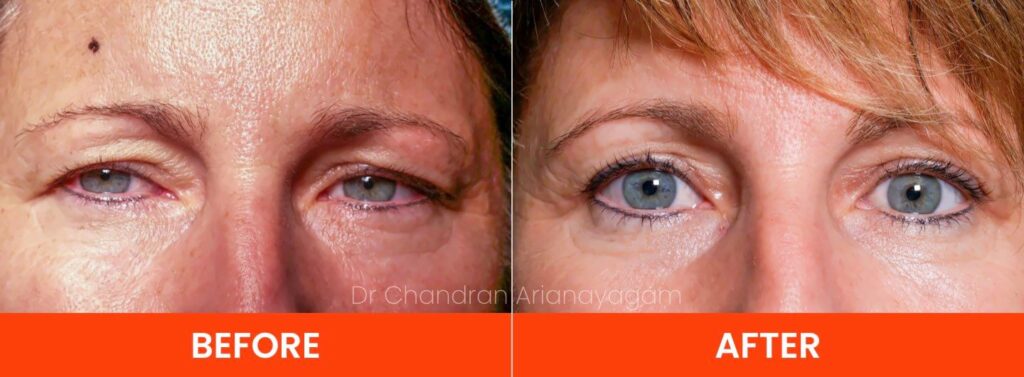This is a common problem in men and women over the age of 45, often noted to be worse as the day progresses.
It is commonly thought to be due to droopy skin on the upper eyelids (blepharochalasia). While this does exist, along with a droopy brow, the main problem is caused by a weakness in the muscles that help to lift the upper eyelids.

How can it help?
Take a look at your eyes in a mirror – the lower eyelid is static and comes into play only when you close your eye forcibly. Most of the movement in opening and closing the eye is by the upper eyelid, going up or down like a curtain. The movement of the upper eyelid going up is mainly by the Levator Palpebrae Superioris (The elevator of the upper eyelid) muscle. With aging, the weight of the upper eyelid increases due to the downward migration of skin, superficial muscle and fat, increasing the load on the Levator muscle and making it work harder. In time the attachment of this muscle to cartilage in the upper eyelid weakens and affects function, resulting in reduced lifting capacity which causes droopy upper eyelids.
- Effects of compromised LPS muscle action
- The upper eyelid gets droopy, getting worse during the day.
- There is a sense of heaviness in the upper eyelids and difficulty keeping the eyes open as the day progresses.
- There is an appearance of tiredness and the sufferer is often annoyed to be told by many around him or her that more sleep is needed!

Procedure
Treatment of the problem is by reversing the changes. Weight reduction of the upper eyelid is done with a blepharoplasty operation, in which excess skin, superficial muscle and protruding palpebral fat is reduced.
At the same time the LPS muscle is shortened and its attachment to the upper eyelid cartilage tightened. A very significant improvement in appearance and function is achieved with the above surgery.








